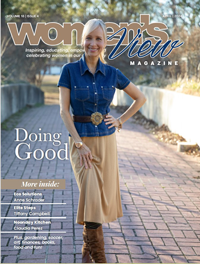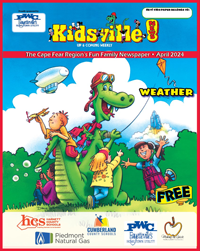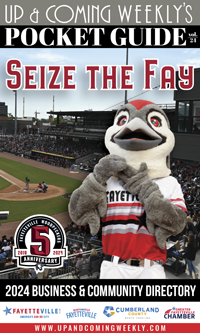Art and Medicine on Display at the Rosenthal
- Details
No so with the painter Dr. Mohamed Osman. He loves to talk extensively about his paintings. And he is very clear about the purpose of his work. For Osman, a clear vision is the underpinning of content; relaying the message or the emotion he is trying to convey. It’s a positive that Osman likes to explain his work. His style and subject warrant questions as to their meaning.
Being a physician by profession, Osman infuses work experience into the meaning of his paintings. Titles like Obesity, Touch Healing and AIDS in Africa are examples of what the exhibit titled Art and Medicine is about. The exhibit is on display at the Rosenthal Gallery on the campus of Fayetteville State University.
Bright in color and expressionist in style, Osman is very clear on what he is trying to capture on canvas for this exhibit — all types of diseases, acts that cause pain and death.
The painting titled Opisthotonus is an example of Osman’s use of a limited palette of primary and secondary colors. The figure in the painting is on her back, yet her back is arched due to severe spasms of the muscle along the spinal column, clouds of color push against the top edge of the body.
In reference to Opisthotonus, Osman carefully explains on his Web site the meaning of the painting. “Such posture is linked to tetanus and can predict imminent death. Tetanus occurs almost exclusively in people who are unvaccinated or inadequately immunized,” said Osman.{mosimage}
Osman’s empathy for the unsuspecting and his slant on the political come into play in his text about the painting: “There have been numerous accounts of tetanus as a result of female genital cutting. Such occurrences were linked to the use of non sterile, contaminated instruments. Are parents of female genital cutting of their loved ones aware of such a complication like tetanus? Are they conscientious about the fatality of such a complication? It has to stop.”
In another painting titled Female Genital Mutilation, Osman talks about the history of such an act and its psychosocial, psychosexual and physical impact on the female. “Instruments used for this painful procedure may vary to include knives, scissors, razor blades or the sharp edge of broken glass. Once the cutting is complete the genital area is cleaned with water and stitched up, legs are bound for nearly 45 days.”
Clearly Osman’s artist’s statement reflects what his work is about. “Art is a strong feeling that communicates with us. Art conveys energy. We are surrounded by this invisible energy. My unconscious part of me strives to capture this energy and to transcribe it into fine art images. I am inspired by what I see, feel, touch, dream and remember.”
In addition I would say that Osman feels a strong purpose to educate and illuminate the public through his paintings. Although the text about many painting is straight forward in content, he can also become poetic in his explanations. A good example of this is his writing on the painting titled Obsessive Compulsive Disorder.
His poetry about the above painting starts like this: “I feel overwhelmed. I feel preoccupied with intruding thoughts. I feel I am unable to control the flow of my thoughts. I feel unable to control self. . . .”
Osman’s personal history is as interesting as his paintings. Born in Somalia and educated in Kalinin, Russia, Osman is presently the physician in charge at the Primary Care Center in St. Pauls, N.C. He speaks five languages: English, Italian, Russian, Somalia and Spanish.
A self taught artist, he grew up in the midst of a turquoise-blue Indian Ocean and the orange dunes of Merka, Somalia. His father owned a tailor shop and Osman worked daily with bolts of fabric in all colors. Perhaps these are the colors reflected in his paintings. After his training as a physician, he went back to Africa. He later immigrated to Canada as a refugee in the 1990s. He eventually became a resident physician in Toledo, Ohio. During the late years of his training he started painting.
His work is included in many medical journals and local newspapers. Exhibitions include, but are not limited to, the Emerging Artist Exhibition at Ohio University, the African American Museum of Art and Pratt Art Gallery, both in Tacoma, Washington, and the Sundiata Arts Festival in Seattle, Washington. Locally, Osman has exhibited at the Architect’s Gallery,the Arts Council of Fayetteville-Cumberland County and the Fayetteville Museum of Art.
To see Art and Medicine visitors will need to come over to Rosenthal Gallery before the Thanksgiving holidays. Visitors will see 24 paintings by Osman which include subjects from diabetes to cancer. Through his paintings and in his text and in poetry, Osman examines that which causes bodily and psychic harm.
In Osman’s own words he writes, “What I create is far from being named primitive art. It communicates with the psychosocial, ego, spiritual and aesthetic sense of your being.”
You can view the works online at www.osmanart.net or visit the Rosenthal Gallery between the hours of 9 a.m. – 4 p.m., Monday through Friday. For more information on the gallery, contact Shane Booth at 910-309-0309.

 How to resolve AdBlock issue?
How to resolve AdBlock issue? 









